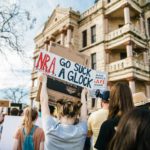 Some events, like the French Revolution, the fall of the Berlin Wall, and Fidel Castro’s rise to power in Cuba, dramatically change societies. Others, like the 1989 Tiananmen Square protests in China and the 2011 Arab Spring, seem to hold similar promise but don’t lead to lasting change.
Some events, like the French Revolution, the fall of the Berlin Wall, and Fidel Castro’s rise to power in Cuba, dramatically change societies. Others, like the 1989 Tiananmen Square protests in China and the 2011 Arab Spring, seem to hold similar promise but don’t lead to lasting change.
Social scientists call these moments “critical junctures”—points in time where big changes are possible. Traditionally, researchers have looked back at these moments to understand how they reshaped institutions after the fact. But new research from Berkeley-Haas suggests there’s more to learn by studying these crossroads as they happen.
“If we can identify critical junctures in real time, we can use surveys and experiments to understand why some countries end up on paths to success, while others fall into decline,” the researchers explain. “Is it just luck, or are there actions leaders can take during these uncertain times?”
In the moment
By studying these moments as they unfold, scholars can test different ideas about what drives institutional change, like class conflict or social movements. Institutions—such as democratic or autocratic political systems—are the fundamental rules that guide behavior and shape societies.
Recognizing critical moments in real time could also help policymakers take action. For example, if we want to protect democracy, it’s important to know when it’s truly at risk rather than just facing tough talk.
Traditional studies, which only look back, often miss key turning points where change didn’t happen. The authors suggest that regularly asking people what they expect from institutions can help spot these moments. For instance, if most people agree that political power will be determined by elections in five years, then the system is stable. But if there’s uncertainty or disagreement, it could signal a critical juncture with multiple possible outcomes.
One example of this approach took place in Afghanistan, where NATO asked 11,500 citizens each quarter if they thought the Afghan army would defeat the Taliban. In 2008, when the survey began, opinions were split, with only 40% believing the army would win. This uncertainty suggested Afghanistan was at a critical juncture.
Tracking beliefs
The researchers are now working on a global survey to track beliefs about institutions and using artificial intelligence to analyze news archives to spot critical junctures in history and today.
Over the last 15 years, studies using randomized controlled trials to observe critical junctures in real time have increased fivefold. These studies have helped governments strengthen social contracts, improve law enforcement, and boost political inclusion.
For example, research in Sierra Leone found that giving voters more say in who political parties choose as candidates improved representation. In Afghanistan, election monitoring technology made people more confident in the integrity of elections, and in Vietnam, letting businesses give feedback on new labor laws improved compliance, even when the laws didn’t change.
The researchers believe that expanding this field of study can shed light on major issues today, like the decline of democratic freedoms, the impact of climate change on institutions, and the rights of marginalized groups.